Un Ballo in Maschera
A Masked Ball
Un Ballo in Maschera is a three-act opera by Giuseppe Verdi that premiered February 17, 1859, at Rome’s Teatro Apollo. It was composed 1857-1859, as “Gustavo III”, the Swedish King, assassinated at a Ball at the Royal Opera in Stockholm in 1792.
Knowing anything about the Italian situation in those years, you should immediately foresee huge problems with censorship. And, in fact, Verdi fought bravely for his opera but had to grant quite a lot to the censors, to finally be able to see his creation performed.
The political situation in the mid-19th century.
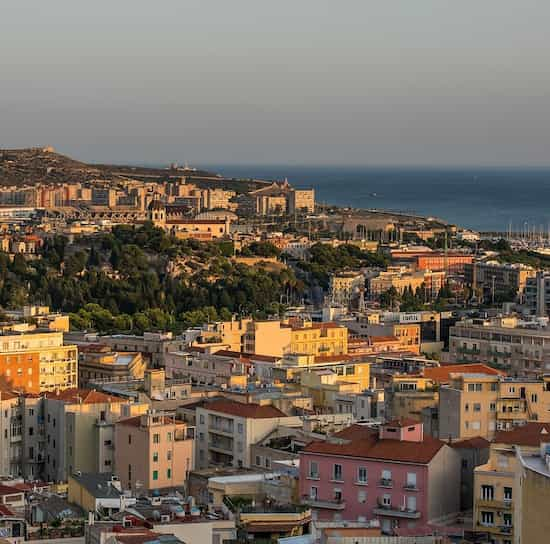
The Second War of Independence of 1859 in Italy was an important part of the creation of the new Italy. It was fought by the alliance of the Kingdom of Sardinia and the Second French Empire against the Austrian Empire. Sardinia was at the time a Kingdom of, right, Sardinia. But it also held a part of mainland Italy, namely Piedmont and Liguria, the part closest to France. The French Emperor Napoleon III allied with the Sardinian prime minister, Cavour, and together they managed to defeat the Austrians.
The war ended with the Armistice of Villafranca, in which Austria ceded Lombardy to France, who in turn gave it to Sardinia. But Sardinia also took Tuscany, Parma, Modena, and Emilia. And to set the stage for a unified Italy, Sardinia was now in control of most of northern Italy, apart from Veneto in the east.
In the south, though, the Kingdom of the Two Sicilies was still the most powerful force in Italy, and maybe in the whole Mediterranean. And that’s where Verdi wanted his opera to play… In Naples and the nr. 1 Opera House in Italy, San Carlo.
Verdi’s eternal conflict with the censors.
– Sixteen years in the Galleys…!
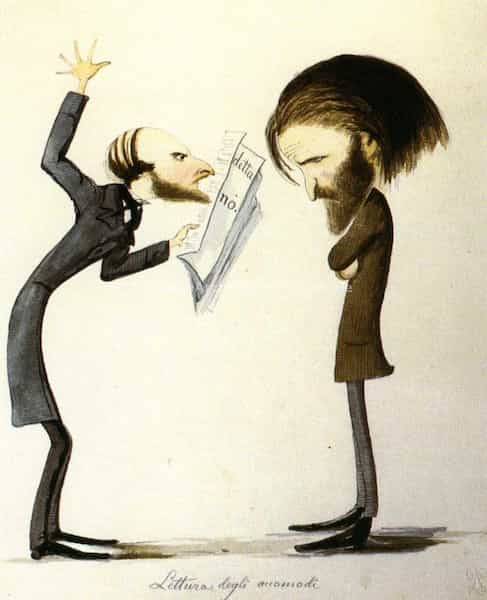
Verdi is referring to the censors, and his seemingly everlasting problems with the moral authorities. And for Un Ballo In Maschera, these problems would take almost ridiculous dimensions.
In 1833, the French composer Daniel-François-Esprit Auber wrote Gustave III, ou Le bal masqué. It became immensely popular, not only by the general audience but it was also appreciated by his fellow composers. The theme was used several times before Verdi got his eyes set on it. He started working in 1857, commissioned by Teatro San Carlo. Very soon he got into trouble. An assassination of a King on stage was out of the question.
So, he changed all the names and made Gustavo the Duke of Pomerania. Furthermore, he set the Opera in the 17th century and radically changed a whole lot of other details. But in the beginning of 1858, the political situation had become even more delicate after the attempted murder of Napoleon III. And censors demanded further adaptations:
- A ball was too immoral, so the assassination had to be during a dinner.
- The time was to be pushed further back. Now the action should be in Florence around 1380.
- Gustavo had to become Armando degli Armandi, the chief of the Guelfi faction.
- But the most troublesome demand was that Amelia from the wife of the King’s best friend, was to become the sister of the King’s best friend… Obviously ruining the whole plot.

So, Verdi withdrew Un Ballo in Maschera…
He was furious! He felt he was hitting his head against a brick wall and decided to withdraw the opera all together. For that, San Carlo sued him. Verdi counter-sued San Carlo, and in the end, a settlement was agreed upon outside the court. But he couldn’t set it up in Naples anymore.
So, he agreed to work with Teatro Apollo in Rome. He could have moved the project further north, but he wanted to be close to Naples to be able to show San Carlo that even in Rome, that close to the capital of the Two Sicilies, his text was accepted. Well, almost accepted, because inevitably he was forced to do adaptations to satisfy the Roman censorship, although less radical than the ones proposed by the Neapolitans.
The setting was now transferred across the Atlantic. Gustavo became Riccardo, the governor of Boston, and the time was set to around 1690. The fact that he made Renato Creole and Ulrica black is surely a sign of Verdi’s ideas in line with the struggle for individual freedom and national independence typical for the time in Italy. I don’t think he knew very much about the realities of the slave trade in America in those days.

Premiere – February 17, 1859, Teatro Apollo, Rome, Italy.
Composer – Giuseppe Verdi
Librettist – Antonio Somma
Running Time – Approximately 2 hours and 10 minutes.
Three Acts
- Overture 4 minutes.
- First Act: ca 45 minutes
- Second Act: ca 30 minutes
- Third Act: ca 50 minutes
In Italian
Main characters.
Riccardo: Lyric Tenor. Earl of Warwick and governor.
Renato: Dramatic (Lyric-Dramatic) Baritone. Riccardo’s secretary, and best friend. Creole.
Amelia: Lyric-Dramatic (Spinto) Soprano. Renato’s wife.
Oscar: Light (Coloratura) Soprano. Riccardo’s page.
Ulrica: Contralto. A supposed sorceress and fortune teller. Afro-American.
Download this short Pdf-guide. Print it, fold it, and keep it in your pocket as a help when you’re at the Opera. Please keep your phone turned off when inside the theater.
Background – Ballo in Maschera is set in…
Boston, British America.
Stockholm, Sweden. More about that here.
Riccardo is the Governor of Boston and in complete control (Remember that he’s really the King of Sweden…). Unfortunately, he’s in love with Amelia, and even more unfortunately, she is the wife of his best friend, Renato. Amelia in turn is also head over heels secretly in love with Riccardo.
Plot
Overture
First Act – Part One.
The Governor’s residence.
The political and social elite is there waiting for their Governor to appear. Among these are also the leaders of a group of conspirators, Tom (bass) and Samuel (bass). Riccardo arrives and is presented with a list of guests to a Ball at the residence a few days ahead. He’s excited to see Amelia’s name…
– La rivedrò nell’estasi… (When I see her,
my soul will be in ecstasy…)
Renato tries to warn his friend about the conspiracy, but Riccardo waves his fears aside. Renato explains why he’s so concerned:
– Alla vita che t’arride… (To the life that smiles on you… If you are lost, what of our country, what of its splendid future?)
The chief judge asks Riccardo to condemn Ulrica, the black fortune-teller, accused of witchcraft. But Oscar, the page, defends her with the short but exquisite:
– Volta la terrea…
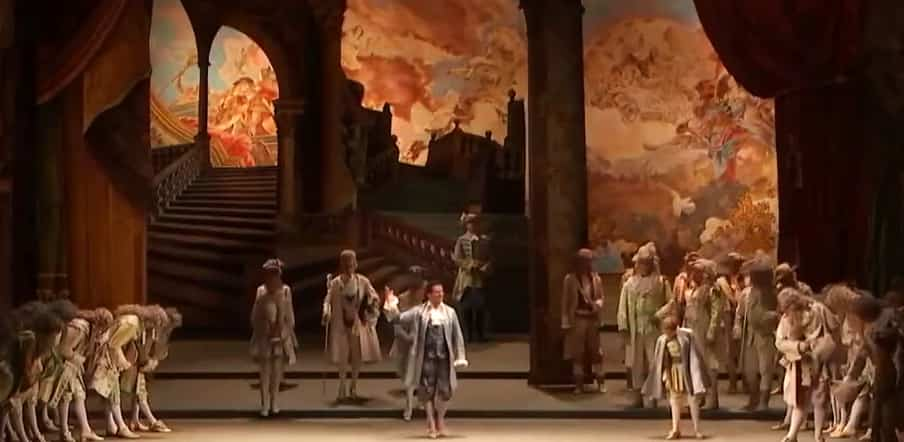
So, Riccardo decides to pay the lady in question a visit. But to do it in disguise together with his companions. The first part finishes with a very fast quintet:
– Ogni cura si doni al diletto…
Check if they are on the beat because this can be a very difficult piece depending on which tempo the conductor likes to impose.
First Act – Part Two.
Ulrica’s dwelling.
Ulrica sings her big aria right out of the gate. A very dramatic piece with an extension of more than 2 octaves:
– Re dell’abisso, affrettati…
The count is in disguise. A young sailor has his future told with precision due to Riccardo’s intervention. Then Amelia enters and Ulrica sends everybody out. Of course, Riccardo manages to hide and stay behind.
Amelia reveals her love for Riccardo and asks Ulrica for a potion to make her forget him. Ulrica then tells her to gather an herb that grows only on the gallows field outside the city. With those special leaves, she will be able to make a forgetfulness potion. Riccardo hears all this from his hiding place.
Now the Duke’s men arrive. Riccardo joins them and sings:
– Di’ tu se fedele…
But when Riccardo, still in disguise, shows her his hand to read his future, she is terrified.
– Leave me… Don’t ask!
But Riccardo insists, and Ulrica tells him that he soon shall die. Not gloriously in combat, but by the hand of a friend and confidant. Riccardo laughs it off without a second thought and asks who this traitor is.
– The first to touch your hand!
Still smiling, the count offers his hand to the courtiers, but out of fear, no one will take it. Renato arrives too late to have witnessed any of this and happily salutes his friend by grabbing his hand. At this, the count reveals his true identity to Ulrica.
Second Act
The gallows field at the outskirts of town. Midnight.
The Act starts with Amelia alone in the dark seeking the herbs. She has defied her fears and sings:
– Ecco l’orrido campo… (Here is the horrid field where crime and death are joined together.)
Riccardo shows up and immediately declares his love. Amelia confesses her love as well but begs him to help her defeat her longing for him. She is his best friend’s wife and can never be his.
There are a few very famous melodies here. The first is (the so-called Cantabile):
– Non sai tu che se l’anima mia….
The second part is (the so-called Cabaletta):
– Oh, qual soave brivido…
Suddenly Renato arrives. As in so many operas, Amelia covers her face with a veil, and Renato doesn’t recognize her. He is there to warn Riccardo. The conspirators are pursuing him. He must flee. Renato gives his cloak to the count to disguise him. He himself dresses in the Count’s cape and agrees to bring Riccardo’s secret lover to safety, but Riccardo makes his friend swear that he shall not unveil the lady and reveal her identity.
But the conspirators catch up on them, and attack Renato, and in the struggle Amelia’s veil drops. The Act finishes with Tom and Samuel and the chorus mocking the poor Renato:
– E che baccano sul caso strano… (What gossiping and commenting there’ll be about this strange case…)
Third Act – Part One.
Renato’s house.
Renato and Amelia are hatching out the betrayal. Renato says she must die (… but later he changes his mind on this and decides that only Riccardo must die.) Amelia sings:
– Morrò, ma prima in grazia… (I shall die, but first I beg you, let me at least clasp to my breast my only child. And if you deny this last favor, do not refuse the prayer of a mother’s heart.)
Then it’s time for Renato’s big aria:
– Eri tu che macchiavi quell’anima… (It was you who stained the joy of my life… You who in such a way regarded the faith of your dearest friend!)
Expect a long applause if it’s done well.
At this point, Tom and Samuel enter. To their surprise, Renato is prepared to join them. He is now prepared to assassin Riccardo. The three men cast lots and the task is assigned to Renato. He, Riccardo’s best friend, is the one who shall kill him.
Third Act – Part Two.
Riccardo’s private chamber.
In his solitude, he thinks about his possibilities. His heart’s desire cannot be satisfied without betraying his friend. Therefore he writes a document sending Renato together with Amelia back to England. He sings the wonderful:
– Forse la soglia attinse… Ma se m’è forza perderti… (… my love will reach you wherever you are, once the memory of you is locked inside my heart.)

Oscar enters with a note from an unknown lady warning the Count that someone will attempt to assassin him during the ball. Riccardo chooses to attend all the same. Secretly because he wants to see Amelia one last time.
Third Act – Part three.
The Ballroom.
Renato tries to make Oscar tell him how the Count is masked. Oscar sings:
– Saper vorreste di che si veste… (You want to know how he is dressed. Oscar knows but he will not say…)
But in the end, he tells him and Renato prepares himself. In the meantime during the dance, Riccardo meets Amelia. He tells her she is going back to England and this is their last farewell. At that point, Renato closes in on them and with a swift movement he stabs Riccardo:
– And this is my farewell…
In modern versions, he is usually shot, as it actually was in Stockholm in 1792.
The crowd wants to lynch the murderer, but Riccardo, mortally wounded, stops them.
– I swear it. I, who loved your spouse, respected her purity. I loved her, but would not have either her heart or your name offended!
– Farewell, forever, my children! Farewell, my beloved America…
Things to look out for.
First act
Overture – This is a masterpiece.
3 minutes – La rivedrà nell’estasi. Riccardo’s first aria.
8 minutes – Alla vita che t’arride. Renato explains why it’s so important that Riccardo lives.
12 minutes – Volta la terrea. Oscar’s song.
15 minutes – Ogni cura si doni al diletto. The finale. Check if they’re in tempo.
19 minutes – Re dell’abisso, affrettati. Ulrica summons the dark forces…
27 minutes – Amelia enters Ulrica’s den.
33 minutes –Di’ tu se fedele. Riccardo’s aria.
43 minutes – Renato shakes Riccardo’s hand.
Second Act
Curtain up – Ecco l’orrido campo. Amelia’s scene at the gallows field.
10 minutes – Non sai tu che se l’anima mia… Oh, qual soave brivido. Riccardo’s and Amelia’s love duet.
18 minutes – Renato arrives.
25 minutes – Amelia drops her veil.
Third Act
2 minutes – Morrò, ma prima in grazia. Amelia’s aria.
7 minutes – Eri tu che macchiavi quell’anima. Renato’s showstopper.
20 minutes – Amelia pulls Renato’s name from the urn.
25 minutes – Forse la soglia attinse. Riccardo alone.
Third Act – The Masquerade
2 minutes – Saper vorreste di che si veste. Oscar’s aria.
6 minutes – Amelia and Riccardo meet. Their last farewell begins.
10 minutes – E tu ricevi il mio! Renato stabs (or shoots) Riccardo
The return to Stockholm.
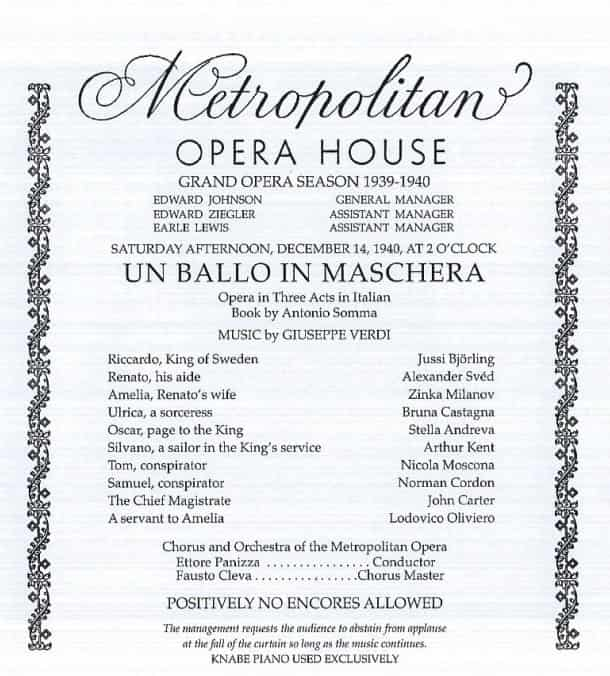 The opera suffered greatly by the fact it had a Governor (King) killed on stage. For many years, the subject was delicate. The Royal Opera in Stockholm had to wait until 1927 to set up Un Ballo in Maschera, at that time with the Boston governor as the main character.
The opera suffered greatly by the fact it had a Governor (King) killed on stage. For many years, the subject was delicate. The Royal Opera in Stockholm had to wait until 1927 to set up Un Ballo in Maschera, at that time with the Boston governor as the main character.
Metropolitan with its legendary director Edward Johnson, decided to open the 1940/1941 season with Ballo in Maschera and the outstanding Swedish tenor Jussi Björling as Riccardo. Interestingly the plot was set in Stockholm and the main character was the King of Sweden. But the names were from the 1859 Boston version. So, the murder was of the Swedish Monarch, Riccardo.
The original idea to have King Gustav III assassinated at the opera became more feasible as time went by. In 1958, Eric Lindegren made a new Swedish translation of the libretto. In it, he changed a lot of the romantic story to a more politically motivated assassination. He let the murder be committed by Holberg and not the true killer, Ankarström, as in Verdi’s 1858 original. This was to be able to portray the killer as a victim of uncontrolled jealousy.
The practice of modern setups.
Today, many theatres prefer to play the opera as Verdi had intended, with the King of Sweden as the main character. To me, that makes a lot more sense. In many scenes, Riccardo’s incognito at Ulrica’s, the first scene where everybody is waiting for the “King”, the whole conspiracy idea, all this presupposes an authority greater than a Governor.
The Masked Ball, although not specified, was supposedly held at the opera. That was a perfectly normal thing for an enlightened monarch. It would have been rather extraordinary for a Governor in Boston, especially as there were no operas in America at the time.
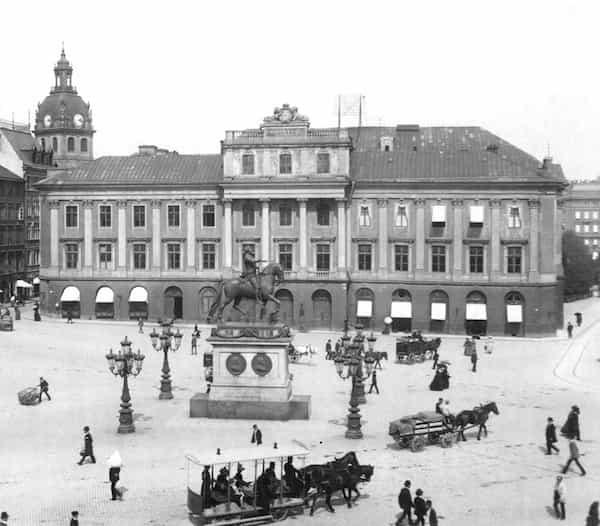
A short comment on the voice of Riccardo (Gustavo III).
This role is quite demanding for a tenor. Sometimes it is suggested that a Spinto tenor or even a Dramatic tenor should sing it. To me, that’s not correct. Although there are some very dramatic parts, the length, the agility required and the tessitura (average height) suggest a lyric tenor. But a lyric tenor with a good punch and strong cords… Because you’re on stage almost from the beginning to the end.
Luciano Pavarotti achieved great success with this role, and rightly so. Pavarotti’s voice is sufficiently metallic and audible to be able to penetrate even in the middle register. And he has no problems whatsoever with the high notes. He was a perfect Riccardo. Sadly, he is no longer with us.
A short comment on Oscar.
The usage of having women play male roles has a long history in opera. And so has the custom of having men playing female parts (Just think of the Castrati). But the typical young male played by a woman usually with an extravagant sexual output was more of a European than Italian fashion (Cherubino in Le Nozze di Figaro).
Verdi wasn’t completely new to the idea. There is a page played by a Mezzo-soprano already in Rigoletto. A very small part, but still. With Oscar, it was the first time Verdi made such a character almost a main part of the cast. Oscar has no less than three quite famous songs in Un Ballo in Maschera.
Download this short Pdf-guide. Print it, fold it, and keep it in your pocket as a help when you’re at the Opera. Please keep your phone turned off when inside the theater.